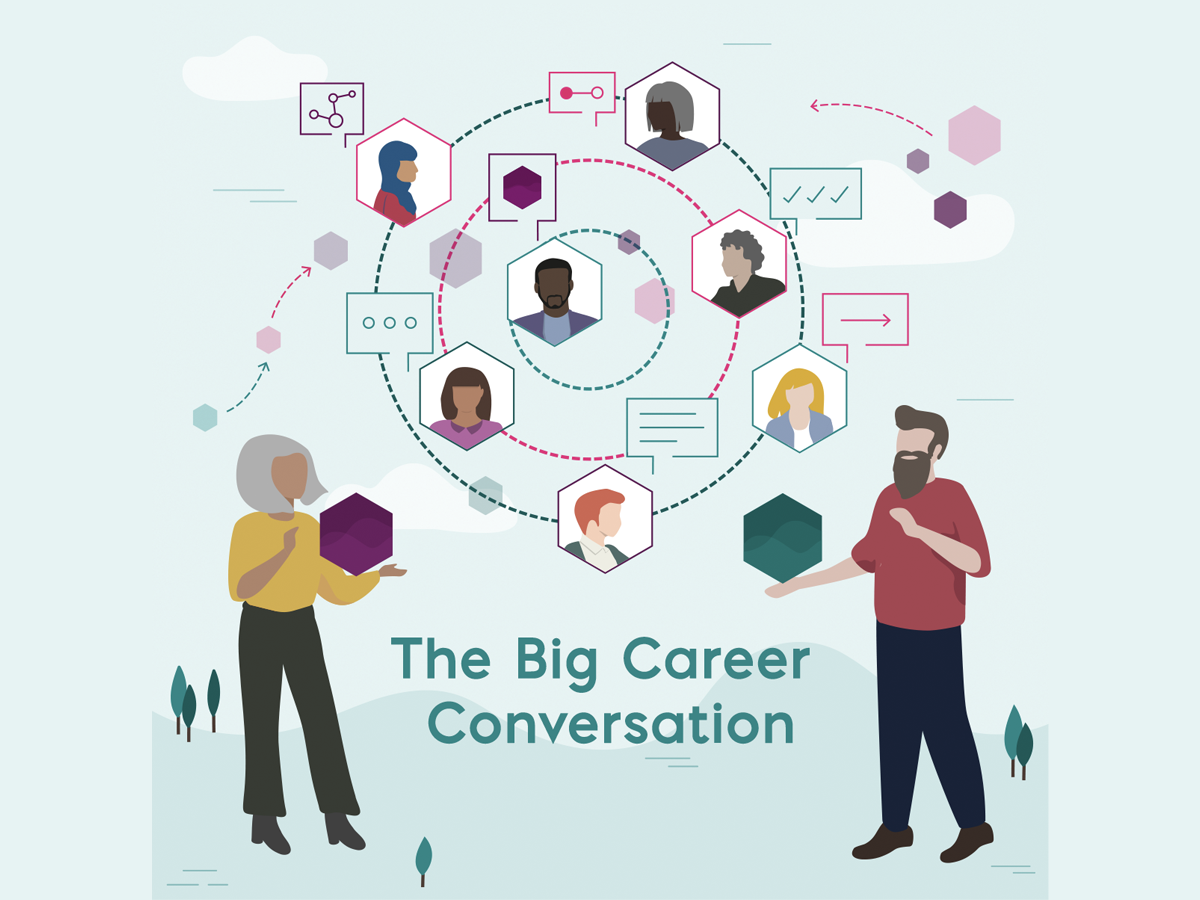30 years ago Harvard Business Review published ‘Toward a Career-Resilient Workforce’[1]. It recognised that an employee population with a growth-mindset was essential to organisational survival. Inspiring people to drive their career and development was understood to be not just ‘nice to have’, but tied up with engagement and flexibility and, ultimately, the capacity to compete. The 1990s was a decade of disruptive change, when technological innovation started to overturn everything we thought we knew about the workplace. What we now know is that transformative change didn’t end, it just speeded up.
We’re still talking about career resilience and it’s still important. Perhaps even more so, because a lack of it can have major implications.
‘There is only one kind of shock worse than the totally expected: the expected for which one has refused to prepare.’ Renault, 1953[2]
If we see career resilience as the capacity to ‘reformulate your goals and/or strategies to adapt to new work and career realities’[3], then not having it can leave people woefully exposed. Even in the 21st century – when the psychological contract between employer and employee is generally accepted as being more transactional[4] – it can be devastating to come to the realisation that you did everything you thought you were supposed to do. You worked hard and showed loyalty and now you’re the unwilling victim of a restructuring.
That kind of outcome is challenging for all concerned. It’s not uncommon though, and employers have for a long time been grappling with how to equip employees with the necessary learning and career agility to navigate perpetually uncertain times.
How are we doing on career resilience?
Many organisations are fully signed-up to the concept of enabling careers for all. Across sectors and industries we see far wider opportunities for people to make cross-functional moves, develop laterally, change work patterns, engage in time-limited leadership sprints and more. There are thoughtfully-crafted learning opportunities, delivered through multiple mediums, which encourage employees to take charge of their career development and focus on future employability. But we also see frustration when resources are underused, and employees seem resistant to alternative career directions. Vertical progression aspirations are hung on to even as organisations flatten out.
Employee’s reluctance to be immersed in career development as a regular and systematic activity is due to many factors:
- A misguided notion that a career happens by itself, or is principally driven by the organisation not the individual
- A failure of trust, triggered by previous initiatives that didn’t follow through
- A lack of understanding about career resilience
- A perception that divergence from traditional career routes is financially punitive, so people are not prepared to consider alternatives
- Finally, work overload is the most commonly cited reason for passing up opportunities to learn, grow and engage with career development
So what makes a difference?
Up until relatively recently, all of this was looked at through the talent management lens. How do we deploy our skill resource effectively to meet the demands of our business? Taking a purely top-down approach misses out on three things:
- People don’t see themselves as ‘talent’ but as individuals, for them it’s about ‘career’.
- Careers are built through interaction and negotiation, rather than in a spreadsheet.
- Imposition from above rarely takes account of what David North calls ‘the affective context’. How are emotions engaged? What is the burning issue that will ignite curiosity and a willingness to experiment?
Ishha Nagrath argues for a Design Thinking[5] approach which zooms in on an ‘empathy’ phase at the beginning.
- When creating career strategies and interventions that you want employees to be inspired by, how much time do you spend observing what people actually do and how they make sense of the changes they’re navigating?
- Do you actively involve them in the development of new career concepts, philosophies and resource modes?
In our work with individuals we see that they often have the answers, but they’re not always asked for them.
During The Big Career Conversation, participants generously shared examples of innovative practice drawn out of direct and empathetic employee interaction that has facilitated employee’s confidence to be proactive. Here are three of them:
- Employee discussion groups that evaluate the reality-to-promise match on career experience at different stages
- Recruitment policies where managers are rewarded for taking on 70% role-ready internals and change the narrative about lateral moves
- Non-monetary employee incentive programmes that encourage people to experiment on new projects. These stretch experiences are validated by building them in as criteria in internal hiring.
In a world where radical change feels like the staple diet, it’s unlikely that career resilience will ever be off the organisational plate.
Is career resilience a priority for your employees? Are your employee’s perspectives front and centre when introducing career development interventions?
[1] Waterman, R et al. Toward a Career-Resilient Workforce, Harvard Business Review, v72 p87-95 Jul-Aug 1994
[2] Renault, Mary ‘The Charioteer’, (1953)
[3] Scott et al., (2016) ‘Developing career resilience and adaptability’ in Organizational Dynamics Vol.45, pp245-257.
[4] Walker, W.J. (2013) ‘The New Work Contract: Mitigating The Negative Effects on Work Attitudes’ in Journal of Organizational Culture, Communication and Conflict, Vol. 17, Iss. 2 P121-136
[5] Plattner, H., (n.d.) ‘An Introduction to Design Thinking PROCESS GUIDE’, Available at: https://web.stanford.edu/~mshanks/MichaelShanks/files/509554.pdf




